
Candida Martinelli's Italophile Site

Main
Page This family-friendly site celebrates Italian culture for the enjoyment of children and
adults. Site-Overview
Hero's
Send-Off for a Fallen NYCPD Officer Crime
Fighting Career - The Right Stuff of Heroes Price
His Family Paid - Willingly A
Few of the Cases that Made the News Martyr
to Justice and Civil Society
Some Sources and Video
Tributes
They told reporters covering the event of Joe Petrosino's heroism
and of how he'd touched their lives. They stood together to show
their disgust for the organized-crime cowards who had taken Joe
Petrosino's life at the age of 48, leaving behind a grieving widow and
a daughter only a few months old. Joe Petrosino was born part of that 1% of us who has the rare
combination of a great capacity for human empathy, and a capability of
using force when necessary, when the other 99% would turn and run for
their lives. To put it bluntly, in these rare people, when faced with aggression,
the 'pissed-off' response far out-weighs the 'piss-in-your-pants'
response. His rugby-player physique and strength served him
well. Joe Petrosino
was not only a tough cop, he was also a smart cop. He recognized that
crime-fighting required more than brute force and reacting to crimes
committed. Petrosino pioneered techniques that are considered
standard-operating-procedure today in the fight against organized
criminal gangs.
Joe Petrosino first arrived in New York City in 1878.
His father moved the family from Padula, a small town in the province
of Salerno, in southern Italy's region of Campania. His father
was a tailor and practiced his trade in America, providing for his
family, even after his wife died of Small-Pox. Joe Petrosino fought off
Small-Pox and the facial scars from the disease only toughened his
rough persona.
One of Joe's brothers returned to Padula to live in
the family home, which is now a museum in Joe's honor, run by his
great-nephew. This proud relation also runs the International
Joe Petrosino Association that annually presents an award to an
Italian law-enforcement official who continues the
organized-crime-fighting tradition of his illustrious uncle.
Previous recipients of the 'Joe Petrosino Award' include these organized-crime-fighters, some of
whom were also martyrs to the cause:
Adelina gave birth to their daughter, also named Adelina, only
months before her husband's final, fatal mission. The benefit
organized to provide a financial cushion for the widow and orphan was
ruined by organized-crime threats, and the organizer was
murdered.
Adelina Petrosino and her child were hounded out of New York City by
her husband's criminal enemies. But she lived to the age of 88,
and was proudly buried next to her beloved husband in Calvary
Cemetery. Petrosino was in Sicily on orders from the NYC Police Chief, to uncover
information that would allow for the deportation of hundreds of
organized crime foot-soldiers from New York City back to Italy.
He was well on his way to accomplishing his task, which is the
direct reason he was
killed, as were, later, several of his colleagues who continued the
work. It was later determined that the NYC Police Chief, through
incompetence, put Petrosino in danger by sending him on such an
exposed mission, and compounded that danger by detailing it to the
press beforehand. Joe Petrosino's story did not die with him. He became a
martyr to the cause of justice and a civil society. His story
lives on to this day in family tales handed down, to books, the
NYCPD
museum,
articles, a park
in New York City, awards, and films. Newspapers were one of the principle sources of popular
entertainment as well as the news in those days-before-television, and
the newspapers recognized the star they had in Joe Petrosino.
Crime reporters were assigned to cover his arrests. His photo
and quotes graced the covers of papers for practically his whole
career as a policeman. Joe Petrosino's story was the subject of one of the first feature
length films (silent) ever produced in the U.S., 'The
Adventures of Lieutenant Petrosino' from 1912. His story has
been the subject of numerous other films since, and the most
recent was a
production for the Italian state television (the RAI).
Their summary of their two-part miniseries is a summary of Lt.
Petrosino's life (I've translated it to English from the original
Italian): "Joe Petrosino, An Italian Hero: Joe Petrosino arrived in New York with his family in 1873.
The Italians are part of the latest wave of immigrants to arrive in
America, and are among the most derelict. They are the fateful
victims of a criminal violence that is born within their own
community. Joe's father is a tailor, and like all the artisans in Little
Italy he is a approached for protection money, and to survive, he
gives in and pays the sum. Joe hates this. Joe has other
ambitions. He wants to learn English, become a U.S. citizen,
but most of all, he wants to become a policeman. In those days the Police Department is controlled by the Irish
immigrants, and even to imagine an Italian in uniform is a distant
dream. Running the entire Department is a controller who will
later become President of the United States: Theodore
Roosevelt. Joe is stubborn. He sets up shop as a
shoeshine-man right outside Police Headquarters, befriends the
police officers, and then submits his application to become a
policeman. It is promptly dismissed, but Joe resubmits it. In the meanwhile, Vito Cascio Ferro, a small criminal boss who
arrived in America at the same time as Joe, from Sicily, is growing
in power in the extortion racket. Joe is the only small
businessman Vito doesn't extort because, perhaps, in some way,
Cascio Ferro feels that it may well be Joe who will block his
criminal career. Joe loves Adelina, the daughter of a restaurateur. And
Adelina loves Joe. But her father gives her in marriage to a
rich businessman. Joe is devastated. But he does not
give up, as he never does his entire life. In 1883 Joe manages
to finally break the Police Department taboo when he becomes an
Italian-American policeman. His career is lighting fast
because of his genius and his courage. To tackle the criminals in the Italian ghetto, Joe experiments
with a new type of investigating: infiltration by disguise.
It works wonders. He also learns that creating a file with
data on all the criminals, helps determine their connections within
the criminal organization. Joe identifies the gang's
organizational structure, and all their cover operations. His
police operations are perfect and the criminal world begins to fear
this Italian-American policeman. The press begins to build him
into a popular hero. Roosevelt promotes him to First Sergeant,
then Detective, and finally Lieutenant.
When Adelina's husband dies, her dreams of life with her love,
Joe, are realized with her marriage to Joe, a marriage that is
attended by photographers and journalists. A present even
arrives from Roosevelt, now President of the United States. A
baby arrives, too, a little girl, the first and only child Joe
Petrosino will ever have. But at the same time, Joe's most extreme challenge arrives, too.
It is this challenge that takes him on a secret mission to Sicily,
on the heels of Cascio Ferro and the ties that bind the mafia in
Sicily to the Black Hand in New York. It's the last
investigation for Joe. He's discovered. The evening of
March 12, 1909, Joe is betrayed and shot dead on a Palermo street.
300,000 people attend his funeral in America. It's the funeral
of a soldier and a hero." (Source:
Rai Fiction Joe Petrosino Page) Far and away the most moving tribute to Joe Petrosino is, in my humble
opinion, the one on The
Officer Down Memorial Page, Inc site. The reflections left
by other officers and admirers show how one man can make a difference,
and inspire others, even when his life is cut short by cowards.
I found this simple message left by a fellow officer the most
poignant: "Rest in peace Brother Joseph, you are a true hero and will
never be forgotten." Amen to that. Lieutenant Joe Petrosino, NYCPD Born 1861 - Died 1909, age 48 Some sources for further
reading: Joe
Avella's article 'A Martyr to Duty'.
Ercole
Joseph Gaudioso's article 'The Detective in the Derby" YouTube Tributes: This one
is in Italian, summarizing Lt. Petrosino's career.
This one
is the first of three parts, explaining the Mafia background that
Lt. Petrosino was up against. Then it discusses many of his
cases that became famous, including one rescuing opera star Caruso
from extortionists. It is in Italian with English subtitles
(of varying quality). While the music is often at odds with
the content, the subject matter is detailed and wide-reaching.
The two other parts use material from a dramatization done for
Italian television.
Visit my
New York City in 1900 Page and my
Mulberry Street Page.

Lt.
Joe Petrosino, Trail-Blazing Fighter of Organized Crime
![]()
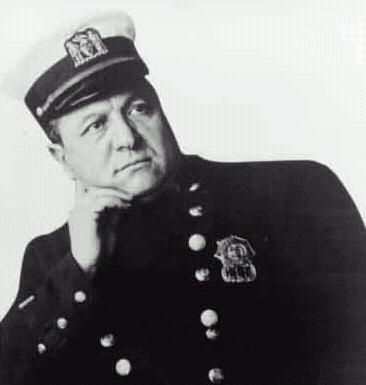
Hero's
Send-Off for a Fallen NYCPD Officer
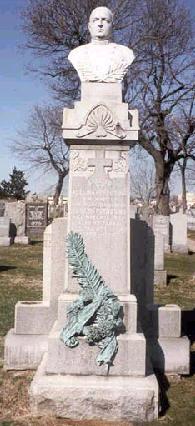 New York City declared the day Lieutenant Joe Petrosino was buried a holiday,
so all those who wanted to pay their respects, could. On April
12, 1909, over 250,000 people paid their respects to the fallen New
York City Police Department Officer, who was killed in the line of
duty, and who had an amazing 25 year career with the NYCPD.
New York City declared the day Lieutenant Joe Petrosino was buried a holiday,
so all those who wanted to pay their respects, could. On April
12, 1909, over 250,000 people paid their respects to the fallen New
York City Police Department Officer, who was killed in the line of
duty, and who had an amazing 25 year career with the NYCPD. They lined the streets from Old St. Patrick's Cathedral to Calvary
Cemetery. They watched the procession of hearse, widow, relations,
friends, colleagues, Police Units, Fire-Fighters, Italian-American
Associations, Civic Groups, school children, and the Police Band
playing Verdi's Requiem. They stood for 5 and 1/2 hours.
They lined the streets from Old St. Patrick's Cathedral to Calvary
Cemetery. They watched the procession of hearse, widow, relations,
friends, colleagues, Police Units, Fire-Fighters, Italian-American
Associations, Civic Groups, school children, and the Police Band
playing Verdi's Requiem. They stood for 5 and 1/2 hours.
Crime
Fighting Career - The Right Stuff of Heroes
 That rare combination is the
stuff of heroes. The tough good-guy is
the stuff of lore and every action hero story ever told. But Joe
Petrosino was the real thing. And the people of New York City
knew it, and they knew how lucky they were to have him on the streets protecting them.
That rare combination is the
stuff of heroes. The tough good-guy is
the stuff of lore and every action hero story ever told. But Joe
Petrosino was the real thing. And the people of New York City
knew it, and they knew how lucky they were to have him on the streets protecting them.
Price His Family Paid
- Willingly
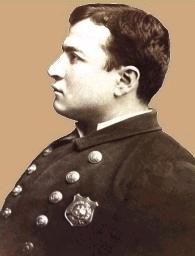 Law and order were in the family
blood, and still is. Joe Petrocino became a cop, and his brother
became a Customs and Immigration
official. His brother's son became a New York City
policeman.
Law and order were in the family
blood, and still is. Joe Petrocino became a cop, and his brother
became a Customs and Immigration
official. His brother's son became a New York City
policeman.
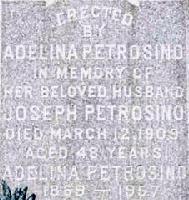 Petrosino
married late in life, well-aware his chosen career was not
well-suited to family life. Adelina was well-aware of the
dangers too, but she married for love, and accommodated her life to live
with her husband, despite the continual death threats.
Petrosino
married late in life, well-aware his chosen career was not
well-suited to family life. Adelina was well-aware of the
dangers too, but she married for love, and accommodated her life to live
with her husband, despite the continual death threats.
A Few of the Cases that Made the
News
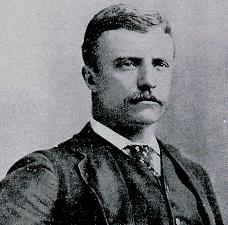 Early
in his career when a beat-policeman, Petrosino came to the rescue
of a Mr. Washington who was being mugged by three thugs.
When the dust settled, Mr. Washington and Joe Petrosino were still
standing. The three thugs were beat to a pulp on the
sidewalk, and under arrest.
Early
in his career when a beat-policeman, Petrosino came to the rescue
of a Mr. Washington who was being mugged by three thugs.
When the dust settled, Mr. Washington and Joe Petrosino were still
standing. The three thugs were beat to a pulp on the
sidewalk, and under arrest.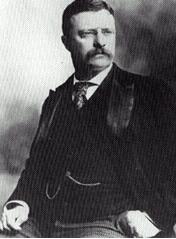 infiltrated
an Anarchist organization based in Italy that was responsible for
the assassination of Italy's King Umberto. Petrosino
discovered U.S. President McKinley was one of the group's targets,
and warned the Secret Service to have the President avoid Buffalo,
New York. But McKinley refused to accept the warning,
despite his Vice President Teddy Roosevelt vouching for his friend
Petrosino's police skills. McKinley was assassinated soon
after in Buffalo by an Anarchist, making Teddy Roosevelt President
of the U.S. (1901).
infiltrated
an Anarchist organization based in Italy that was responsible for
the assassination of Italy's King Umberto. Petrosino
discovered U.S. President McKinley was one of the group's targets,
and warned the Secret Service to have the President avoid Buffalo,
New York. But McKinley refused to accept the warning,
despite his Vice President Teddy Roosevelt vouching for his friend
Petrosino's police skills. McKinley was assassinated soon
after in Buffalo by an Anarchist, making Teddy Roosevelt President
of the U.S. (1901). ave
a public beating (in self-defense, of course) to Ignazio Lupo, the
Sicilian mafia's top killer (who buried most of the bodies at his
family's stables in Harlem). Petrosino beat Lupo to pulp and
stuffed him head-first into an ash-barrel on a street in Little
Italy before the shocked and amused Italian immigrants, who only
moments before would have crossed themselves in fear at the name of Lupo.
Lupo never regained the standing he had before the beating, and
was soon after sent down on counterfeiting charges.
ave
a public beating (in self-defense, of course) to Ignazio Lupo, the
Sicilian mafia's top killer (who buried most of the bodies at his
family's stables in Harlem). Petrosino beat Lupo to pulp and
stuffed him head-first into an ash-barrel on a street in Little
Italy before the shocked and amused Italian immigrants, who only
moments before would have crossed themselves in fear at the name of Lupo.
Lupo never regained the standing he had before the beating, and
was soon after sent down on counterfeiting charges.
Martyr to Justice
and Civil Society
 On March 12, 1909, Joe Petrosino was
lured by an informant to an ambush. He was shot dead in a square in Palermo, Sicily.
On March 12, 1909, Joe Petrosino was
lured by an informant to an ambush. He was shot dead in a square in Palermo, Sicily. His Legacy
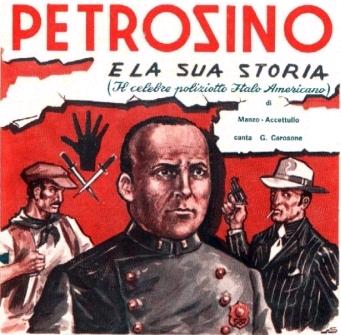 After his death,
stories of his crime-fighting career were
published in serial form in the papers, written by the famous reformer
Reverend A. R. Pankhurst, entitled 'The Perils of Petrosino'.
These formed the basis of a famous series of comics in Italy, that
made the name of Joe Petrosino even more famous in Italy than in the
U.S.
After his death,
stories of his crime-fighting career were
published in serial form in the papers, written by the famous reformer
Reverend A. R. Pankhurst, entitled 'The Perils of Petrosino'.
These formed the basis of a famous series of comics in Italy, that
made the name of Joe Petrosino even more famous in Italy than in the
U.S.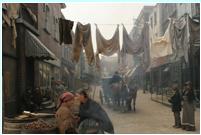
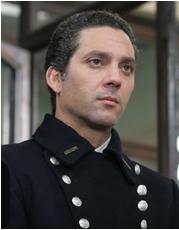 In
the end, Joe manages to create the jewel of his career: a
police unit made up of only Italian-American policemen, that is
dedicated to fighting crime within the Italian community. His
final objective is Cascio Ferro. But the duel goes on for many
years. It is a duel made up of deaths and ambushes during
which Joe proves that managing all the new crime that goes under the
sign of the Mano Nero, or Black Hand, is Cascio Ferro.
Eventually, Joe gets Cascio Ferro deported back to Italy.
In
the end, Joe manages to create the jewel of his career: a
police unit made up of only Italian-American policemen, that is
dedicated to fighting crime within the Italian community. His
final objective is Cascio Ferro. But the duel goes on for many
years. It is a duel made up of deaths and ambushes during
which Joe proves that managing all the new crime that goes under the
sign of the Mano Nero, or Black Hand, is Cascio Ferro.
Eventually, Joe gets Cascio Ferro deported back to Italy.
I was recently contacted by
Hollywood film producer Ken Aguado, who is
interested in perhaps bringing the story of Lt.
Petrosino to the big screen. Mr. Aguado produced, among other
films, the gritty
Salton Sea. The idea of a gritty, realistic portrayal of
Lt. Petrosino's story is very appealing. Interestingly, the
hyphenated-Italian actor Anthony LaPaglia
was in Salton Sea. Mr. LaPaglia's always impressed me with his
ability to portray intensity and compassion on screen, in men of
action and, at times, violence. I could really picture him as
Lt. Petrosino in his final years. He even has Joe Petrosino's
powerful physique. I wish Mr. Aguado luck with his plans,
since Lt. Petrosino's heroic story of his defense of civil society
is a story that deserves to be told again, and again, and again.A Moving Tribute

Some sources and Video
Tributes